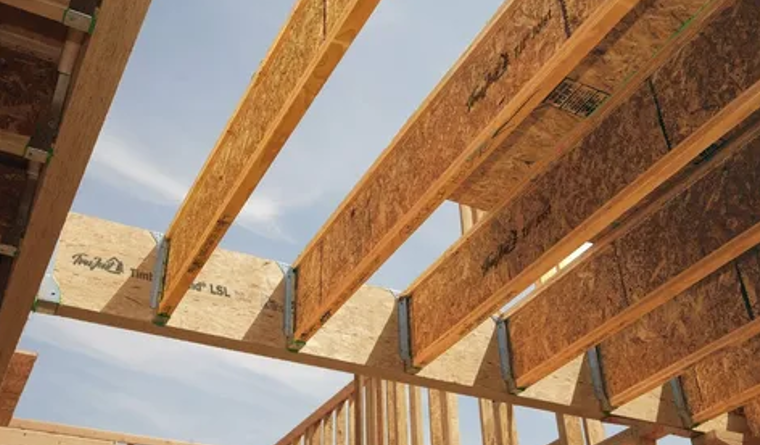Understanding Various Framing Systems in Home Construction
Building a home requires careful consideration of many factors, with the framing system being one of the most critical. The framing system forms the skeleton of the house, providing structural integrity and ensuring the building’s durability over time. The term “various framing” encompasses the different methods and materials used to create this foundational structure, each offering unique benefits and suited to specific situations. Factors such as climate, budget, and architectural design play a significant role in determining the most appropriate framing system. In this article, we will delve into the most commonly used framing systems and their specific applications in home construction.
Table of Contents
ToggleWood Framing
Wood framing, also known as stick framing, is one of the most widely used systems in residential construction. It involves constructing the home’s skeleton using wooden studs, joists, and rafters. This method has been a popular choice for centuries due to its cost-effectiveness, availability of materials, and ease of construction.
Wood framing is particularly suited for homes in areas with moderate climates. It’s flexible, allowing for easy modifications during and after construction. However, wood is susceptible to termites, rot, and fire, which may require additional treatments and fire-resistant materials. Despite these challenges, wood framing remains a favorite among many house framing contractors because it offers a balance between affordability and structural reliability.
Steel Framing
Steel framing is an alternative to wood, particularly in commercial and industrial buildings, but it’s gaining popularity in residential construction as well. Steel framing involves the use of steel columns and beams to form the structure’s skeleton. One of the major advantages of steel framing is its resistance to termites, rot, and fire, making it a durable option for various framing needs.
Steel is also incredibly strong, which allows for larger open spaces and unique architectural designs without compromising structural integrity. However, steel framing can be more expensive than wood, and it requires specialized tools and expertise, making it less common in traditional residential builds. It’s often favored in regions prone to natural disasters like hurricanes and earthquakes due to its resilience.
Concrete Framing
Concrete framing is another robust option in home construction, particularly for high-rise buildings and homes in hurricane-prone areas. This system involves the use of reinforced concrete to create a solid and durable frame. Concrete framing is known for its strength, fire resistance, and ability to withstand extreme weather conditions.
In the context of various framing systems, concrete is often used in conjunction with other materials, such as steel, to create reinforced concrete frames. While this method provides excellent durability, it is labor-intensive and requires specialized skills. Moreover, concrete framing can be more expensive than wood or steel, making it less common in single-family residential construction.
Timber Frame and Post-and-Beam Construction
Timber framing and post-and-beam construction are traditional methods that involve the use of large wooden beams and posts to create a home’s structural framework. These methods are different from standard wood framing in that they rely on larger, exposed timbers and joints rather than small studs and nails.
Timber framing is known for its aesthetic appeal and has been used for centuries in various cultures. It’s especially popular in homes that aim to achieve a rustic or historical look. This type of framing is highly durable and allows for open floor plans, but it can be more expensive due to the cost of materials and the craftsmanship required.
Light Gauge Steel Framing
Light gauge steel framing is similar to traditional wood framing but uses thin steel sections instead of wood. This type of framing is gaining popularity in residential construction due to its resistance to pests and its lightweight nature, making it easier to handle and install.
This system is particularly useful in areas where wood is scarce or where there is a need for a non-combustible structure. Light gauge steel framing also provides flexibility in design, allowing for various framing techniques to be applied depending on the architectural requirements. However, like other steel framing systems, it requires specialized skills and tools, which can increase construction costs.
Insulated Concrete Forms (ICF)
Insulated Concrete Forms (ICF) are an innovative approach to home construction that combines the strength of concrete with the insulation properties of foam. ICF blocks or panels are used to create the walls of a home, which are then filled with concrete to form a solid structure.
This type of framing system offers excellent thermal insulation, making it energy-efficient and comfortable in various climates. ICF is also known for its soundproofing qualities and resistance to natural disasters. While it may have a higher upfront cost compared to traditional wood framing, the long-term benefits in energy savings and durability make it an attractive option for modern homebuilders.
Hybrid Framing Systems
Hybrid framing systems combine two or more framing methods to leverage the benefits of each. For instance, a home may use wood framing for its aesthetic appeal and steel framing for added strength in specific areas. This approach allows for greater flexibility in design and construction, making it suitable for various framing challenges.
House framing contractors often recommend hybrid systems when a project demands specific structural or aesthetic requirements that a single framing system cannot provide. These systems can be customized to fit the unique needs of a project, ensuring that the final structure is both functional and visually appealing.
Choosing the Right Framing System
Selecting the appropriate framing system for a home depends on several factors, including budget, climate, design preferences, and local building codes. Consulting with experienced house framing contractors can help homeowners navigate these choices, ensuring that the framing system used is the best fit for their specific needs.
Understanding the various framing options available and their applications in home construction is essential for making informed decisions. Whether you opt for the traditional wood framing, the strength of steel, or the durability of concrete, each system has its unique advantages that cater to different architectural and environmental demands.

